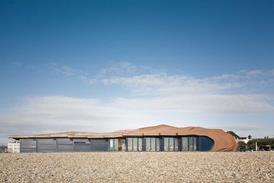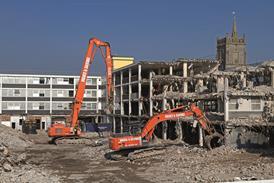As a specifier of cladding or curtain walling, you may wish to adopt innovative technology. However, there is one strong disincentive for this – the slow development of supporting product and installation standards. To overcome this, it is advisable to seek the advice of facade engineers, cladding consultants and – in the case of curtain walling, slope glazing and rainscreen cladding – the Centre for Window and Cladding Technology (CWCT). Its standard and guide documents provide a technical database for product, performance and testing requirements relevant to the UK climate that NBS have incorporated into relevant work section specifications. CWCT standard documents are presently being reviewed, to align where possible with recently issued European Standards, and are expected to be republished within the next 18 months.
2. Determination of materials
It is useful to ascertain whether the cladding makes up the whole wall or is merely a component within it. Curtain walling may comprise glazing units and solid panels that when erected will fulfil all performance requirements. Rainscreen and other sheet cladding on the other hand usually only provide the weather protection component to a backing wall. Increasingly complex forms of double- or multiple-leaf walling or cladding packages are emerging to optimise environmental conditions such as control of temperature, light and so on. The overcladding market is becoming equally sophisticated – recloaking with prefinished panels is being upstaged by solutions such as structural glass, brises-soleil, tensile fabric and ETFE foils.
3. Type of specification
Determine whether a single works package will encompass the external walling, cladding or recladding of a building. With many forms of composite metal panels and curtain walling systems, this will be the case – particularly where proprietary specification against stated characteristics is possible. However, with more complex, multi-layer systems, work packages will often be divided or sublet, and the specifier will have a difficult role in anticipating which components will contribute to which performance requirements. Bespoke performance specification requires project calculations, evaluation and testing, which can be carried out with the aid of a facade engineer and advanced modelling software.
4. Performance requirements
NBS guidance now offers specifiers the choice of more than 20 cladding or covering specification sections. Each section includes clauses relevant to the type of cladding covered, but there are performance requirements common to most sections. These are:
Postscript
NBS is Publisher of National ÐÇ¿Õ´«Ã½ Specifications www.thenbs.co.uk
Tiles
- 1
- 2Currently reading
Checklist
- 3
- 4
- 5
- 6
- 7























No comments yet